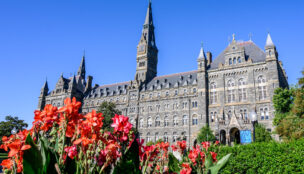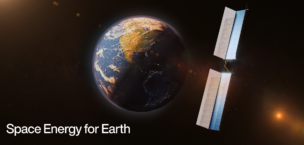Hubble needs a boost, and SpaceX has stepped up to provide it.
Yesterday, NASA and SpaceX announced that they’ve teamed up through an unfunded Space Act agreement to conduct a feasibility study into whether a crewed commercial mission could boost Hubble’s orbit and extend its lifetime.
Hubble: an abridged history
When the Hubble space telescope first launched in 1990, it headed straight to a vantage point about 600 km above the Earth’s surface. Over the past 30+ years, Hubble has observed the universe in ultraviolet, visible, and infrared wavelengths, producing immense value for scientists and endless inspiration for the rest of us Earthlings.
But the orbiting space telescope has had its fair share of issues as well. Over time, certain pieces on board, including gyroscopes, batteries, and electronics, have broken down. The telescope was designed to be serviceable, and between 1993 and 2009, NASA sent up five servicing missions to fix these issues.
After the most recent servicing mission in 2009, the telescope orbited at an altitude of ~560 km, Hubble Space Telescope project manager Patrick Crouse said on a press call. Right now, the telescope resides at ~535 km.
- If steps aren’t taken to raise the telescope’s orbit, Crouse said it has a 50% chance of naturally deorbiting by 2037.
- NASA’s intention is to manually deorbit the telescope at the end of its life. If the orbit isn’t raised, then Crouse said the agency would build out plans for a deorbit mission by the end of the decade.
You raise me up
SpaceX reportedly approached NASA with the idea to use Crew Dragon to raise the orbiting telescope’s altitude. Jared Isaacman, commander of Polaris Dawn, said that the idea came up in conversations about what the Polaris Program missions might be able to accomplish, but it’s not set in stone yet that Polaris will play a role in a potential servicing mission.
As it stands now, the agreement between NASA and SpaceX will look into whether it will be possible to service Hubble using commercial space technology. The study will last for six months, with investigations performed by both NASA and SpaceX. At this point, no money is changing hands.
- NASA’s Science Mission Directorate associate administrator Thomas Zurbuchen reiterated several times over the course of the press call that the feasibility study is not a guarantee that such a mission will actually happen.
- The study is purely technical for now. Whether there are legal barriers to the mission would be addressed later on in the process, SpaceX VP of customer operations and integration Jessica Jensen said.
On the SpaceX side, the team will look into whether it is possible to modify Crew Dragon to dock with Hubble and provide a boost into a higher orbit. The NASA team will consider other commercial options for raising Hubble’s orbit
The details about the future mission are scarce right now, since NASA and SpaceX have not yet kicked off the feasibility study. It’s possible that the second Polaris Dawn mission could service Hubble. A crewed mission is possible, as is an uncrewed one. Whether the mission will just boost Hubble’s orbit or perform other servicing functions is still unknown.
As Jensen put it…“everything is on the table.”
The big picture: Hubble has been providing invaluable science observations for north of three decades, and it still has a lot of life left in it—if it can stay in orbit. Crouse’s optimistic projection is that a commercial boost could raise the orbit by 40-70km. If a mission could hit the high end of that range, then Hubble could operate for another 15 to 20 years.
Correction: An earlier version of this story referred to the Polaris Program as Polaris Dawn. That mistake has been corrected.




